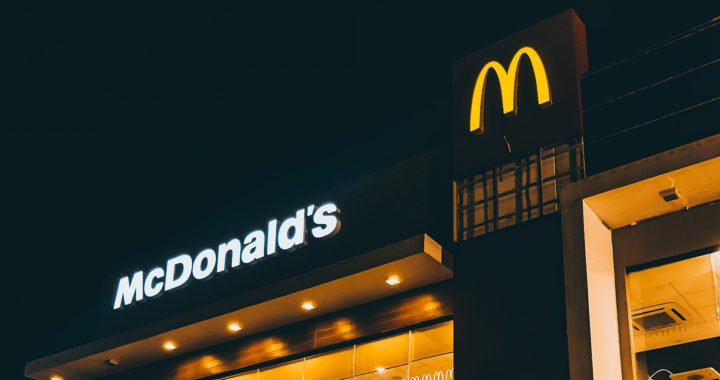It is one of the largest fast-food chains in the world as evident from its presence in over 100 countries and territories. McDonald’s is a true success story. The company is known for its burgers, fries, and other fast-food items, as well as its iconic golden arches logo. However, despite its established presence and brand resonance, the market in which it operates remains very competitive. This article explores the competitive forces that are critical to the business of McDonald’s based on the Five Forces model of Michael E. Porter.
Porter’s Five Forces Analysis of McDonald’s: A Look Into Its Position Within Its Industry and How It Compares to the Competition
1. Industry or Competitive Rivalry
The fast-food industry is highly competitive, with many large and well-established companies vying for market share. To remain competitive, companies in this industry must constantly innovate and offer high-quality products at competitive prices.
McDonald’s competes with other major fast-food chains in different regional markets. For example, in the United States, it competes with Burger King, Wendy’s, Taco Bell, and Chick-fil-A, among others. These companies are also known for their widespread presence and a large number of locations across the country.
Nevertheless, competitive rivalry is a strong force for fast-food chains. McDonald’s manages this force by capitalizing on its notable strengths including consistent marketing strategy, continuous focus on expanding its business in different markets, expansion of its menu and other business concepts, and using technology to improve further its operations.
It is still important to note that other established fast-food chains follow the same strategies and tactics. For example, in Southeast Asia, especially the Philippines, the company has struggled to compete against the homegrown Jollibee Foods Corporation.
2. Threat of Substitutes
Substitutes are also a strong force for fast-food chains. There is a high availability of substitute products to fast food items. These include food products sold in groceries and homecooked meals, menu items in casual and formal dining restaurants, and artisanal food from specialty coffeehouses and bakeries, among others.
Furthermore, considering the food items of McDonald’s, there are product substitutes from other fast-food chains themselves. For example, Taco Bell sells Mexican-inspired fast-food items such as tacos and burritos while Chick-Fil-A specializes in chicken sandwiches.
The entire fast-food market and the broad restaurant market have a monopolistic market structure. This has been demonstrated through the presence of different substitutes, availability of close substitutes, ease of substation, high perceived level of product differentiation, and low switching costs of consumers, among others.
3. Threat of New Entrants
Entering the fast-food market requires substantial resources. The barriers to entry are high. These include financial resources to lease properties, construct and furnish stores, purchase equipment, and afford day-to-day operational expenses. Furthermore, these include high-level marketing strategies and tactics and access to suppliers.
It is important to highlight that McDonald’s is not just a fast-food chain. Part of its success comes from the fact that it is also a real estate company. Note that a real estate venture is capital intensive. Nevertheless, the company purchases and develops lands in high-value and high-traffic commercial zones to have them leased to its franchisees.
Fast-food chains also need to be appealing to both the target market and potential business partners or franchisees. Most of these companies depend on a franchising model to enter new markets and expand their presence. Potential franchisees prefer investing in franchisors with established brands and proven business models.
The threat of new entrants is a moderate to weak force for McDonald’s. Startups and smaller businesses might not have the relevant resources and access to capital to compete against bigger fast-food chains. However, established companies or deep-pocketed investors can enter the fast-food market but doing so does not guarantee success.
4. Bargaining Power of Customers
Another force that influences the industry and competitive positions of McDonald’s is the bargaining power of its customers. This is a strong force due to three major reasons. The first has something to do with the switching cost.
Switching from one fast-food restaurant to an alternative or substitute has low cost because of the several choices available to the customers. The large number of alternative restaurants and substitute food and beverage products are the second and third reasons why the bargaining power of customers has a strong influence.
These three factors also prevent McDonald’s from increasing its prices or using a higher markup to preserve its market share and attract more customers further. The prices of its food items are almost similar to food items offered by other fast-food chains.
In addition, because of this strong bargaining power, it also influences other facets of business decisions and directions. Note that the company has explored offering healthier food choices to respond to growing health awareness. It also has a corporate social responsibility program to ensure that it remains responsive to the needs of its stakeholders.
5. Bargaining Power of Suppliers
Suppliers also have bargaining power over their business clients. However, for McDonald’s, this is a weak force. The concentration of suppliers is higher compared to the number of restaurants and other end-use food and beverage manufacturers. There are a lot of options to choose from, thus lowering the switching cost.
It is also important to highlight the fact that doing business with an established organization can be more profitable than catering to the needs of smaller businesses. Suppliers would want to work with larger companies because doing so brings a sense of security.
McDonald’s has also optimized its supply chain through direct partnerships with suppliers. It has several programs aimed at improving the performance of these businesses. These programs help in creating a win-win situation in which both the fast-food giant and its suppliers are able to create value for each other rather than merely exchanging value.





